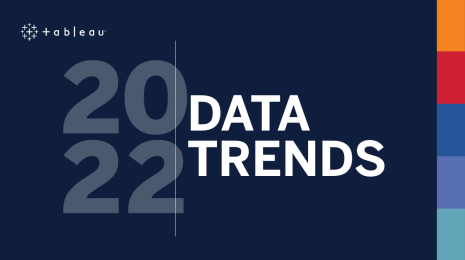More Asia Pacific marketers embrace modern analytics to gain competitive edge
This year’s Adobe and Econsultancy Digital Trends survey of nearly 13,000 global marketers surfaced the top three areas of priorities for marketers in 2018 as content and customer experience, analytics, and audience and data management.
While considerable focus is placed on how “content marketing’s increasingly strategic nature means that more organizations see the function as a crucial in-house competency,” a sticking point is the 13-percent gap between the first and second priorities of content and analytics. This gap indicates while marketers recognize that compelling content breathes life into modern marketing, acquiring deeper capabilities and analytics mastery – the sine qua non of content – severely lags.
With analytics, an explosion of digital footprints and data sets for marketers have become the new reality. And measurement tools that test and strategically hone our marketing efforts are in close reach. For marketers who see themselves more as artists than scientists, the problem with not having a grasp of your analytics to measure marketing performance means you’re hard-pressed to advance strategic performance for better outcomes. On the other hand, imagine the efficiency marketers can gain if they can make productive decisions by seeing and understanding the data for themselves?
Here are three stories that demonstrate how multi-sized, regional marketing organizations are harnessing data with modern analytics to gain competitive advantage.
RedMart: Harnessing real-time insights in buying patterns improves customer satisfaction

RedMart, a Singapore-based, online grocery, maintains a 100,000 square foot warehouse where they regularly stock more than 16,000 products. Fast, updated insights into inventory and shipment data help RedMart consistently meet expectations of discerning customers who want to know that the items they wish to purchase are in-stock.
Where most of RedMart’s customer data was siloed, and hampered by bottle necks with IT trying to fulfill report requests from staff, they embraced Tableau to enable enterprise-wide visibility and understanding of their customer, inventory and operations data.
The RedMart marketing team uses Tableau to study the uptake of various initiatives and improve their promotions. Customer service also tracks the number of customer contacts for a given day or week, and can analyze based on the type of contact, whether it is about a broken item or delayed delivery. By analyzing this, they uncover customer trends that departments, including marketing, optimize to foster deeper customer engagement.
With employees and department heads more easily accessing data using Tableau, and answering questions for marketing and customer benefit, RedMart is realizing greater operations efficiencies. Report generation efforts have been reduced by almost 80 percent by gaining real-time visibility of data and staff is freed up to focus on strategic efforts with quicker decision-making.
Hear from Prashant Parashivapgol, BI Architect at RedMart to learn more about their improvements to marketing effectiveness, customer service, business efficiencies, and operations using Tableau.
REA Group: Direct marketing data access drives greater business impact
Asia Pacific has become the world's largest source of real estate capital. According to property group Knight Frank, the region’s US$90 billion worth of capital beat Europe (US$83 billion) and North America (US$80.9 billion) as the largest source of cross-border real estate capital last year.
Spurred by data collection from multiple sources – developers, property agents, property buyers and sellers – the REA Group (REA), a residential and commercial property website in Australia has embraced an analytics culture for better decision-making.
Stacy Sterling works with marketing stakeholders at REA to drive brand advertising, track brand health, and generate traffic to their digital platforms.
According to Stacy, Tableau’s modern analytics story at REA is one of “decentralization.” By empowering many business stakeholders to see and understand their data, the group collects different perspectives to challenges and opportunities as they decide how to fix them. “When my stakeholders have direct access to the data that they want to see, and they get to engage and explore it themselves, I think they feel a deeper connection to it. And I think it feels more relevant to them,” Stacy shares.
Watch Stacy explain how decentralizing data access results in empowered, more solution-oriented stakeholders in REA’s marketing department. As more users engage with data, “analytics are now in the hands of people who understand the business context best.”
Metro: To see the details in retail data means more brand opportunities ahead
eMarketer reported in 2017 that retail sales in Asia Pacific will reach $9.254 trillion by the end of 2018, with a growth rate of nearly eight percent. An important economic sector in Singapore, retail is made up of about 22,000 establishments and employs approximately three percent of the country’s workforce.
In a further boost to Singapore’s retail scene, the government rolled out a Retail Industry Transformation Map (ITM) to spur retailer productivity by embracing digital technologies.
Metro – an iconic Singapore-born retail chain – has been one of the sector’s first-movers. The retailer embraced Tableau to break out of limitations from their brick-and-mortar operating model and develop savvier marketing campaigns that enhance the customer experience.
Metro’s management realized that shoppers make more informed buying decisions due to the accessibility and convenience of online shopping. Too quickly react to changes in the market landscape and remain competitive, they sought an effective BI tool that would accurately segment their data and help them gain business and market insights.
By bringing Tableau to the storefront, Metro uncovers insights into active and quiet shopping periods, inventory flow, and customer purchase behaviors. This enables staff to effectively plan operational and promotional strategies to improve efficiency and sales performance. In turn, this has led to savings in markdowns, storage costs, and opportunity costs and decision-making across Metro has shifted from ‘gut feel’ to being data-guided.
Metro’s Head of Business Analytics, Customer Relationship Management (CRM) and Merchandise Controller Erwin Oei shares: “Analyzing customers’ buying history, we are able to develop customer behavior profiles and determine the types of products that they prefer. With this, we can specifically target them with appealing promotions, helping us save on advertising costs and improving customer satisfaction.”
Read about Metro’s journey toward modern analytics here.
Data-Driven decisions are mission critical for the success of regional organizations
In closing, embracing a business intelligence solution that will help your marketing team and the entire organization make better and faster decisions with data is an important priority.
As a primer to assess the level of your marketing organization’s analytical maturity, review our whitepaper titled: “The Marketing Analytics Evolution.” It offers a compelling basepoint from which enterprises can springboard towards a data-guided culture that generates marketing effectiveness and business success.
More resources on Tableau for Marketing are available here
Related stories
Subscribe to our blog
Get the latest Tableau updates in your inbox.










